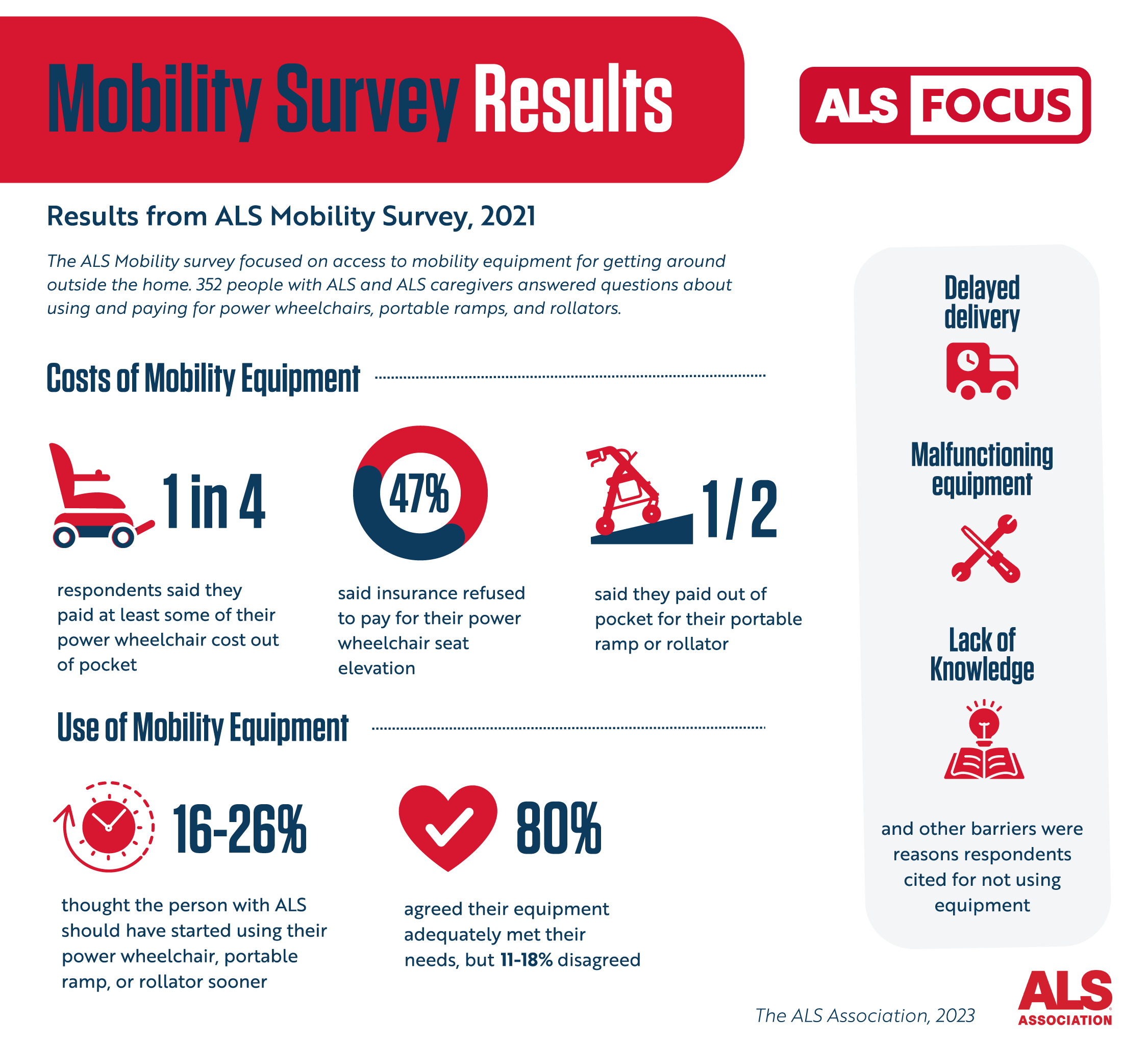Use of Mobility Equipment
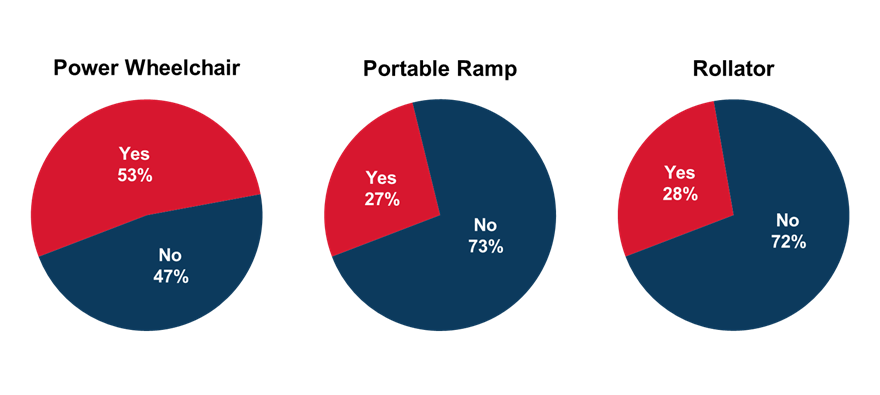
Figure 1. Proportion of survey respondents who currently use ALS mobility equipment.
Power Wheelchairs
We wanted to examine the ALS community’s experience with power wheelchairs. About half of the people we surveyed said they or the person they care for use(s) a power wheelchair currently. Of those who do not use one currently, 17 percent used one in the past.
Of those who use power wheelchairs currently, about 92 percent said their wheelchair comes equipped with at least one advanced feature. These features include:
- A captain seat tilt-in-space or reclining functionality
- Power elevating leg rests or a foot platform
- A seat that can elevate electronically
- Alternative drive controls
Portable Ramps
We also asked our survey takers about their experience with portable ramps, which the survey defined as ramps that can sometimes be folded and can be carried outside of the home. Of the people who use a portable ramp currently (27 percent), most use it one to three days a week. An additional 21 percent reported using one in the past.
Rollators
Finally, we looked at peoples’ experience with rollators. About 28 percent of the people we surveyed use one and, of those asked, an additional 45 percent said they have used one in the past. Nearly everyone has a four-wheeled version.
How Did People Pay for Their Mobility Equipment?
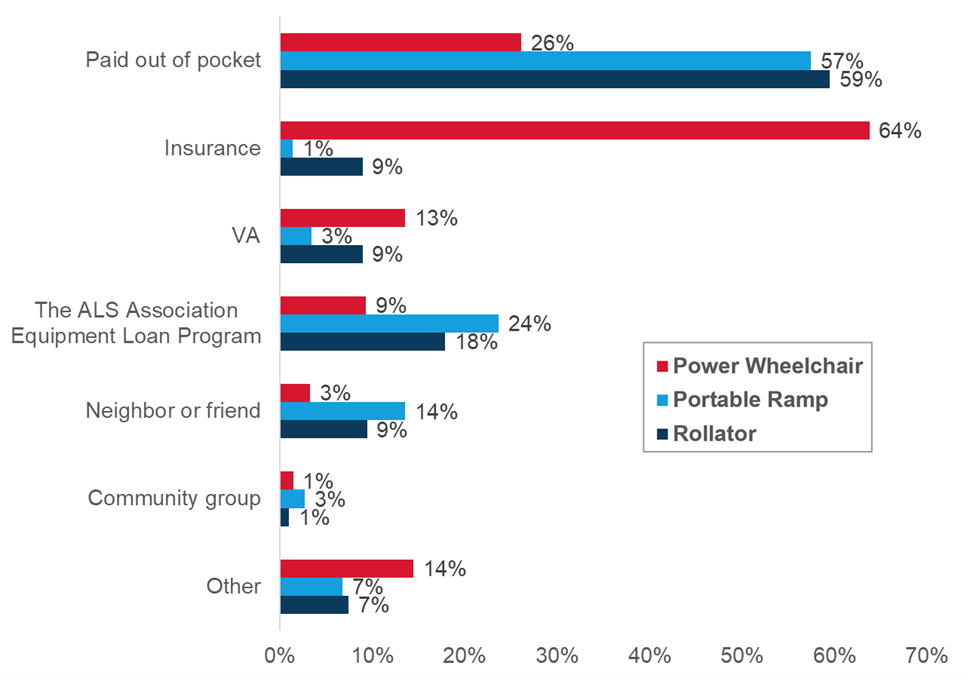
Figure 2. Proportion of survey respondents who accessed ALS mobility equipment through one or more sources.
Power Wheelchairs
Those who responded to our survey told us that they were able to pay for their wheelchairs using a variety of sources. Nearly two-thirds of people with ALS said insurance at least partially covered their chair, and about a quarter said they paid for a portion of it out of their own pockets. Thirteen percent of people with ALS received assistance either through the Veteran’s Administration or Paralyzed Veterans of America. Nine percent received a chair on loan from the ALS Association Equipment Loan Program.
Insurance covered most advanced features on powered wheelchairs; the only element that insurance covered less than 96 percent of the time was a powered seat that elevates. Insurance covered this feature for only about half of the respondents.
Portable Ramps
Fifty-seven percent of those using a portable ramp currently or in the past paid for it out of pocket. Neither insurance nor the Veteran’s Administration or Paralyzed Veterans of America covered any cost for most people. Nearly a quarter of survey respondents said they received a ramp through the ALS Equipment Loan Program. About 14 percent received a ramp from a neighbor or a friend.
Rollators
About 60 percent of those who reported current or past use of a rollator paid for it out of pocket to some degree. Only 9 percent received coverage from insurance, and 9 percent received coverage from the Veteran’s Administration or Paralyzed Veterans of America. About 18 percent of respondents received a rollator from the ALS Association Equipment Loan Program, and 9 percent received one from a friend or neighbor.
Reasons for Not Using Mobility Equipment
Power Wheelchairs
Our survey revealed that people do not currently use power wheelchairs for many reasons besides not needing one. Their write-in responses illustrated this finding:
Several respondents have requested or ordered a wheelchair and are waiting for it to arrive. One person with ALS said the chair would take three months to come. Another is waiting for the Veteran’s Administration to order one. These delays reflect the state of the supply chain during the time we deployed this survey. News reports indicate that supply chain issues have affected people’s ability to acquire home health devices, including power wheelchairs.
Several people indicated that they are just learning how to use their chairs or have one but do not depend on it for most of their activities. One person with ALS is currently practicing using it for a couple of hours a day, learning how to optimize the battery to keep all of its functions operating. One person said they only use their power wheelchair when they go out for walks.
Several people who responded to the survey are at the stage in their disease where it has become too difficult to use a power wheelchair. Three people stated that they could no longer operate the controls. One person said their caregiver also finds it hard to handle their chair. Another respondent said they could not get into their wheelchair without help. One caregiver said they could not use a chair because the person they care for cannot walk. Another respondent noted that moving from the bed to the chair is too cumbersome.
Many people who took our survey reported that they do not use their chairs because of logistical concerns. For some, the chair is not functioning correctly, and for others, it is too heavy. One person said their chair stopped charging, and they could not get in to see the doctor who prescribed it. One person said their chair lift is not in place, so they cannot leave the house in the chair. Two respondents said the chair is too big or too heavy to fit in their cars.
Finally, several respondents said the person who needed the chair was not ready to use it. One person with ALS said they are not emotionally prepared to accept that they need a wheelchair. Two caregivers suggested the same about the person they care for.
Portable Ramps
Similar to our findings with wheelchairs, we learned that people with ALS use portable ramps in many different ways and choose whether or not to use them for various reasons.
For example, many people said they only use a portable ramp outside of the house visiting friends or family. Some people do not use one because they are either not familiar with portable ramps, have not thought about using one, do not know how to get one, or cannot afford one. Others told us they do not need portable ramps because they have permanent ones installed in their homes. Some indicated that they could not use portable ramps in their homes because the ramps do not fit.
Rollators
Most of the people who took our survey said they don’t use a rollator, mainly because they are physically unable to.
Does Peoples’ Mobility Equipment Meet Their Needs?
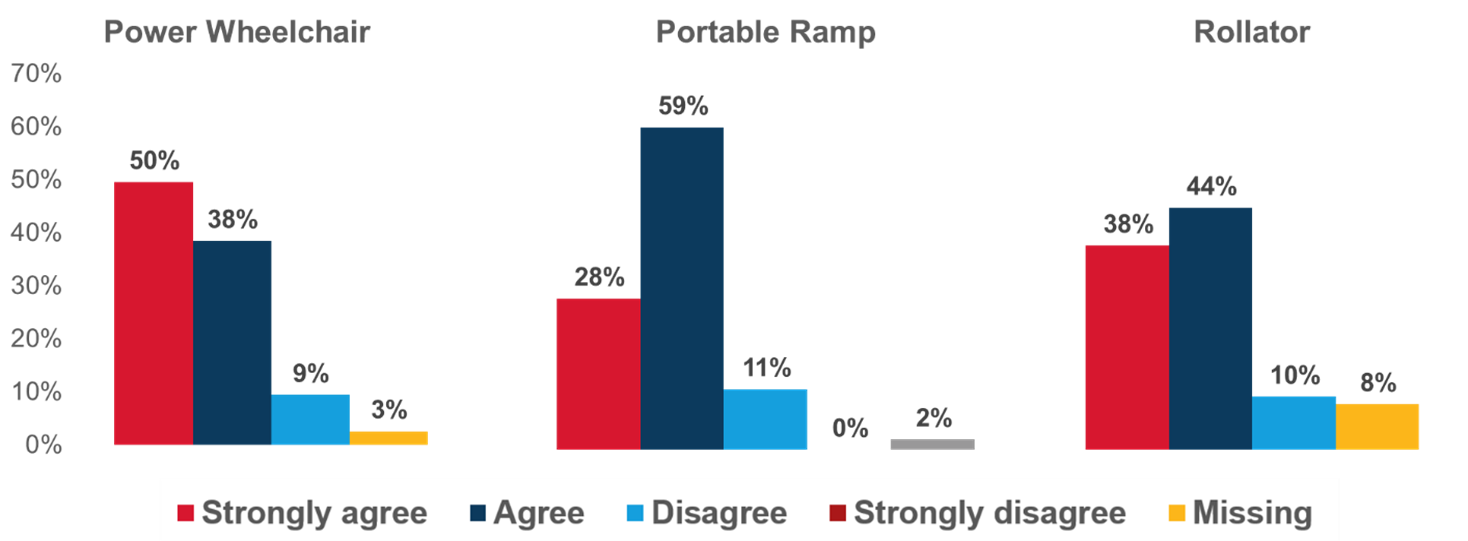
Figure 3. How much people with ALS agreed or disagreed that their equipment met their current mobility needs.
Power Wheelchairs
A previous survey found that a power wheelchair improved mobility for nearly nine in 10 people with ALS (Ward et al., 2015). Our survey revealed similar results: 88 percent of the people with ALS we surveyed said that their chair meets their needs.
Portable Ramps
Of those who use a portable ramp, about 87 percent said it meets their current mobility needs.
Rollators
Among survey takers with ALS who have used a rollator, 82 percent said that it meets their mobility needs.
Is Equipment Being Accessed at the Right Time?
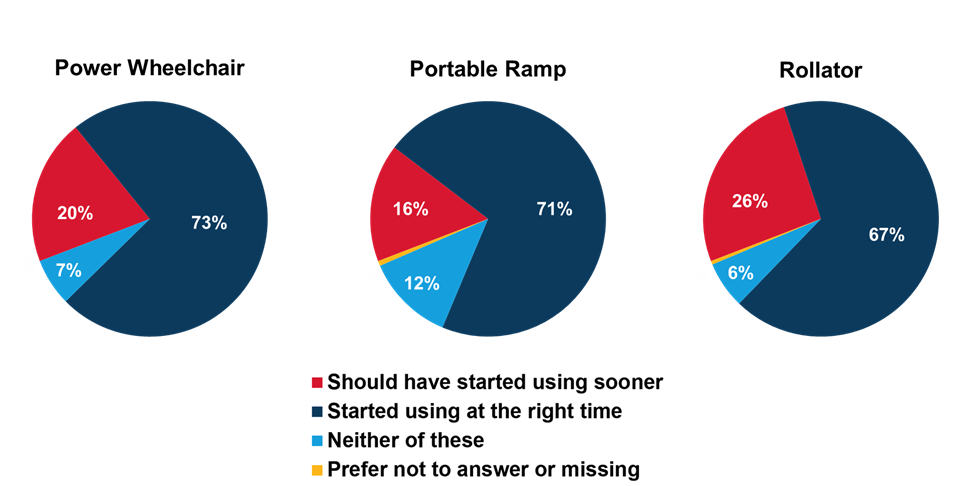
Figure 4. How people with ALS and caregivers felt about whether equipment use began at the right time.
Power Wheelchairs
About 20 percent of people with ALS and current caregivers thought they or the person they care for should have started using a power wheelchair sooner.
Portable Ramps
About 16 percent people with ALS and currently caregivers thought they or the person they cared for should have started using a portable ramp sooner.
Rollators
One quarter or people with ALS and current caregivers thought the person with ALS should have started using a rollator sooner.
Results Summary
The Mobility survey assessed people’s experience with various devices that assist people with ALS in moving around. This survey also quantified key ways we can support access to mobility equipment to ensure people with ALS and caregivers are able to engage with the world in the way that they want.
We found that people often receive insurance coverage for power wheelchairs, but seat elevation is not usually covered. Seat elevation allows people with ALS to engage with others at eye level, which could benefit those using power wheelchairs. Increasing access to affordable seat elevation is therefore warranted.
A notable proportion of people receive ramps and rollators through The ALS Association Equipment Loan Program, but the findings also show there is room to increase the reach of this program to more community members.
The survey revealed that most people who use such devices feel they meet their needs. Still, the fact that 9% to 11% disagree that their power wheelchair, portable ramp, or rollator met their needs is important and suggests more can be done to ensure mobility equipment is allowing people with ALS to engage with the world in the way that they want.
While most thought they started using their equipment at the right time, anywhere from 16% to 26% thought they should have started using it sooner. Ward et al. (2010) found similar results in a smaller sample of people with ALS. Having access to equipment and knowing how to use it before it’s needed could help prevent injuries like falls and prevent periods where mobility is hindered because the right equipment hasn’t arrived yet.
The devices covered in this survey weren’t accessible to everyone for various reasons. Many are unable to use such devices because of different logistical challenges. For example, even when acquiring a power wheelchair was possible, malfunctioning equipment or lacking other home access equipment hindered people from using the chair. Furthermore, if more people were aware that portable ramps are an option, they might be able to utilize these ramps to improve their mobility outside of their home. Increasing awareness of this device could therefore benefit the community.
Overall, we found that many people with ALS still face several challenges accessing mobility support that works for them. This survey helped us understand gaps in peoples’ care that we can address in the future.
Your Opinions Matter!
Through this research on mobility devices and other surveys, the Association hopes to improve support programming for patients and caregivers, improve scientific research and clinical trials for people with ALS, and learn how to advocate for the ALS community effectively. Experiences like those recorded here show how ALS impacts more than just the person with the condition and that taking care of someone with ALS takes a community.
Click here to take ALS Focus Surveys
Sharing the wants and needs of people with ALS and caregivers is the ultimate goal of the ALS Focus survey program.
Survey Methods
The survey took place online between October 18, 2021 – December 20, 2021. 233 people with ALS, 132 current caregivers, and 95 past caregivers reported their answers. The survey contained about 30 questions. This study, as part of ALS Focus, has an exemption determination from the Western Institutional Review Board.
The results presented here are not intended to represent the full population of people with ALS and ALS caregivers in the United States. Instead, these results reflect the needs and experiences of those who participated in the survey.
References
Ward, A. L., Hammond, S., Holsten, S., Bravver, E., & Brooks, B. R. (2015). Power Wheelchair Use in Persons With Amyotrophic Lateral Sclerosis: Changes Over Time. Assistive Technology: The Official Journal of RESNA, 27(4), 238–245.
Ward, A. L., Sanjak, M., Duffy, K., Bravver, E., Williams, N., Nichols, M., & Brooks, B. R. (2010). Power Wheelchair Prescription, Utilization, Satisfaction, and Cost for Patients With Amyotrophic Lateral Sclerosis: Preliminary Data for Evidence-Based Guidelines. Archives of Physical Medicine and Rehabilitation, 91(2), 268–272.
